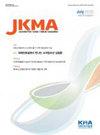日本医疗保险收费表的现状和影响
IF 0.5
Q3 MEDICINE, GENERAL & INTERNAL
引用次数: 0
摘要
背景:韩国是世界上人口老龄化速度最快的国家。老年人的医疗费用迅速增长,这引发了人们对医疗保险财政可持续性的担忧。因此,有效分配有限的医疗资源的需求日益增加,而改善收费表则被视为实现这一目标的有效途径。日本比韩国至少早 20 年经历了超老龄化社会,并成功地改进了其收费标准。然而,韩国的收费标准需要克服种类相对有限和简单的挑战:在日本,无论医疗机构的类型如何,新病人的诊费都是一样的,比韩国高出约 40%。在老病人会诊费方面,床位数少于 200 张的医疗机构的会诊费大大高于大型医疗机构,从而抑制了大型医院的复查。日本的加分项目有 71 种,比韩国的 28 种更加多样化,其中 6 岁以下儿童、节假日和深夜的加分项目明显高于韩国:日本设计收费标准的目的是为了从结构上减少医疗资源的消耗,并对医疗服务提供者的行为进行有效补偿。这一政策是韩国收费标准应遵循的标准。今后,有必要通过对日本收费标准的详细研究,制定应对超老龄化环境的措施。本文章由计算机程序翻译,如有差异,请以英文原文为准。
The current status and implications of the medical insurance fee schedule in Japan
Background: Korea has the most rapidly aging population in the world. Medical costs for the elderly are quickly increasing, which raises concerns about the sustainability of health insurance finances. Accordingly, the need to allocate limited medical resources efficiently has increased, with improving the fee schedule seen as an effective way to achieve this. Japan has experienced a super-aging society for at least 20 years prior to Korea and has been successful in improving its fee schedule. Korea’s fee schedule, however, needs to overcome the challenge of being relatively limited in type and simplicity.Current Concepts: The new patient consultation fee in Japan is the same regardless of the type of medical institution and is approximately 40% higher than found in Korea. In the case of established patient consultations, the fee for medical institutions with fewer than 200 beds are substantially higher than for large medical institutions, thereby suppressing re-examination at large hospitals. Japan’s additional points consist of 71 types of items, which is more diverse than Korea’s 28 types, and the additional points for children under six years of age, holidays, and late nights are set significantly higher than that found in Korea.Discussion and Conclusion: Japan designed its fee schedule to structurally reduce the consumption of medical resources and to effectively compensate for the behavior of medical providers. This policy is a standard which Korea’s fee schedule should aim for. In the future, it will be necessary to prepare measures to respond to the super-aging environment through detailed research concerning Japan’s fee schedule.
求助全文
通过发布文献求助,成功后即可免费获取论文全文。
去求助
来源期刊

Journal of The Korean Medical Association
Medicine-General Medicine
CiteScore
0.50
自引率
0.00%
发文量
84
审稿时长
4-8 weeks
期刊介绍:
The Journal of the Korean Medical Association (JKMA) is the official peer-reviewed, open-access, monthly journal of the Korean Medical Association (KMA). It contains articles in Korean or English. Its abbreviated title is ''J Korean Med Assoc''. The aims of the Journal include contributing to the treatment of and preventing diseases of public health importance and to improvement of health and quality of life through sharing the state-of the-art scientific information on medicine by the members of KMA and other national and international societies.
 求助内容:
求助内容: 应助结果提醒方式:
应助结果提醒方式:


